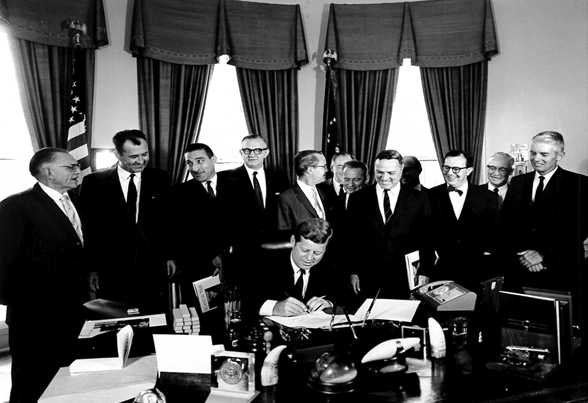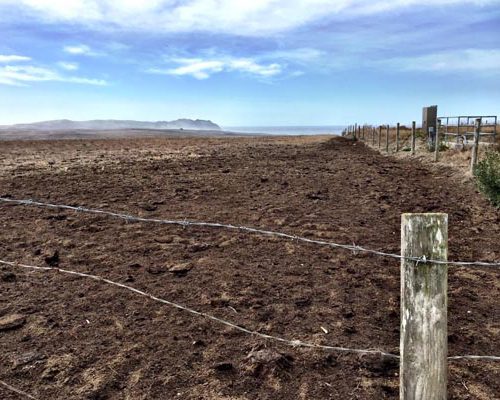“To conserve the scenery and the natural and historic objects and the wild life therein and to provide for the enjoyment of the same in such manner and by such means as will leave them unimpaired for the enjoyment of future generations.”
Organic Act of 1916 establishing the National Park Service
What We Are Fighting For
 Only a handful of America’s national parks permit cattle grazing. One-third of the Point Reyes National Seashore—some 18,000 acres—IS dedicated to the exclusive use of two dozen ranchers. There are 6,000 cattle in the Seashore, more than there are Tule elk on the planet. Cows outnumber elk in the park 10 to 1. But the problems at the Seashore extend far beyond elk. Restore Point Reyes Seashore is fighting to reform management failures that threaten the future of the park itself. We are raising awareness, inspiring public involvement, and taking appropriate action— including in the courts. We don’t engage in nor endorse anyone breaking the law—including the NPS. Our goal is to require the NPS to follow the law— managing our national parks and the wildlife and resources therein “unimpaired for future generations.”
Only a handful of America’s national parks permit cattle grazing. One-third of the Point Reyes National Seashore—some 18,000 acres—IS dedicated to the exclusive use of two dozen ranchers. There are 6,000 cattle in the Seashore, more than there are Tule elk on the planet. Cows outnumber elk in the park 10 to 1. But the problems at the Seashore extend far beyond elk. Restore Point Reyes Seashore is fighting to reform management failures that threaten the future of the park itself. We are raising awareness, inspiring public involvement, and taking appropriate action— including in the courts. We don’t engage in nor endorse anyone breaking the law—including the NPS. Our goal is to require the NPS to follow the law— managing our national parks and the wildlife and resources therein “unimpaired for future generations.”
FEATURED
National Park Service allows for the killing of native elk to appease ranchers, angering conservationists
 The struggle between conservationists and cattle ranchers, caught in a decades-long tug of war was just extended by the NPS: a newly announced management plan providing the ranchers with an extra line of rope in the form of a 20-year extension of their leases and a controversial policy that will see the culling of native elk.
The struggle between conservationists and cattle ranchers, caught in a decades-long tug of war was just extended by the NPS: a newly announced management plan providing the ranchers with an extra line of rope in the form of a 20-year extension of their leases and a controversial policy that will see the culling of native elk.
READ MORE
Point Reyes Seashore & Yellowstone allegedly managed for cows over native wildlife
 Newly released documents tend to confirm conservationists’ suspicion that the National Park Service under the Trump administration is managing wildlife habitat in both iconic parks chiefly for the benefit of cattle ranchers. READ MORE
Newly released documents tend to confirm conservationists’ suspicion that the National Park Service under the Trump administration is managing wildlife habitat in both iconic parks chiefly for the benefit of cattle ranchers. READ MORE
Reflections on the 58th Anniversary of Point Reyes National Seashore By Ken Brower
As  a boy I was witness, a fly on the wall, to the creation of Point Reyes National Seashore. In the photograph above, surrounding President Kennedy as he signs the seashore into law, are a number of familiar faces. The tall, graying man on the far right is my father, David Brower, the first executive director of the Sierra Club. READ MORE
a boy I was witness, a fly on the wall, to the creation of Point Reyes National Seashore. In the photograph above, surrounding President Kennedy as he signs the seashore into law, are a number of familiar faces. The tall, graying man on the far right is my father, David Brower, the first executive director of the Sierra Club. READ MORE
September 13, 1962. JFK signs the enabling legislation for Point Reyes National Seashore.
Photo by White House photographer Abbie Rowe.
 Environmental Titan Huey D. Johnson Dies at 87
Environmental Titan Huey D. Johnson Dies at 87
Mill Valley, Calif.—For six decades Huey D. Johnson was a steadfast force for nature, protecting wild rivers and securing millions of acres of land as Western Regional Director of the Nature Conservancy, and later as its president; as founder of the Trust for Public Land and as California’s Secretary of Resources, where he spearheaded “Investment for Prosperity,” a 100-year plan that became a blueprint for sustainability programs worldwide. READ MORE
View the Live Stream Memorial Service in Remembrance of Huey Johnson from August 14, 2020
UPDATES
Park affirms support for agriculture in final EIS
September 23, 2020
Continue reading →Point Reyes releases final plan to preserve ranches, cull tule elk
September 18, 2020
Continue reading →New Park Service Plan a Giveaway to Ranchers
September 19, 2020
Continue reading →As fire burns, activists sneak into Point Reyes to bring water to parched elk. Should they?
Sep. 1, 2020
Continue reading →Tule elk are at the center of an epic conservation battle on Point Reyes National Seashore
July 28th, 2020
Continue reading →Marin Voice: Ranching at Point Reyes National Seashore doesn’t add up
May 17, 2020
Continue reading →90 Percent of Public Comments to NPS Plan for Point Reyes National Seashore Oppose Ranching
View the coded comments: https://restoreptreyesseashore.org/docs/Processed_Comments_Combined.docx
View the analysis: https://restoreptreyesseashore.org/docs/PRNS_GMP_Summary_Sheet.xlsx
Coding method explained: https://restoreptreyesseashore.org/docs/Analysis_Overview_final.docx
A Remnant of Wild California
In the midst of an urban population of more than 7 million people, Point Reyes National Seashore and its neighboring park, the Golden Gate National Recreation Area, are unique fragments of wild California. Rare bunch grasses and wildflowers, Tule elk and spawning salmon are among more than 1,500 plant and animal species that depend on these national parks. Of these, more than 50 animal species and 50 plant species at Point Reyes Seashore are listed as rare, threatened, or endangered. The United Nations designated these parks as an International Biosphere Reserve in 1988. Millions of visitors arrive annually to experience the wild Pacific coast, wind-swept vistas, and rare native plants and wildlife -remnants of what California was before European Contact. These national parks are at the center of a tug-of-war between public and private interests that soon will determine the future of these parks.
RESTORE POINT REYES INDEX
Ranching by the Numbers at Point Reyes National Seashore
Parks in Peril
With the coronavirus keeping people close to home, demand for outdoor recreation is crucial to people’s health and wellbeing. Access to our national parks-especially those near population centers-has taken on greater importance. How do we defend… America’s heritage and ensure that national parks will be “unimpaired” and open to all people now and for generations to come?

Why Restore Point Reyes?
Urbanization, livestock grazing, logging, and agriculture have fragmented California’s native landscapes. Less than one percent of California’s grassland is still intact today. Remnants of once-vast coastal prairies still exist at Point Reyes National Seashore and the Golden Gate National Recreation Area, with the potential to recover the rich biodiversity that has been lost to decades of cattle operations. To provide refuge for wildlife; restore habitats for threatened and endangered species; improve water quality; provide educational and volunteer opportunities; sustain cultural traditions of native peoples; preserve America’s natural heritage—is this not what our national parks were created for?


What and Who are Parks For?
Private ranching on 28,000 acres at Point Reyes National Seashore and the Golden Gate National Recreation Area is heavily subsidized by taxpayers. Impacts from the 6,000 beef and dairy cows at these parks are well documented: soil erosion, water pollution, invasive plants, declines in fish and bird populations, conflicts with wildlife, loss of public access to public land. Native Tule elk, the iconic symbol of Point Reyes Seashore, are found in no other national park. Most of the elk are confined behind an 8-foot-high fence to keep them off parkland leased for cattle grazing. Now, under the new plan, ranchers at the national seashore will be able to “diversify” their operations-adding sheep, goats, pigs, and chickens to the nearly 6,000 cattle they graze in the park. There are more cattle in this national park than there are elk in the world.

Speak Up for Your Park-Take Action
The articles, studies, and historical record assembled on this website are intended to inform and empower you to take action. Your comments are crucial to regaining the ecological balance and abundance of our national parks that are every Americans rightful heritage.
We all are have a stake in the future of our public lands. Polls show that the public favors greater protection for national parks and monuments. But agricultural interests have opposed the scientific analyses that the Seashore needs and the public deserves. The ranchers are working behind the scenes to change the law rather than risk that a concerned public will derail their plans for the Seashore. That’s why the next 30-days are crucial to take action.
Read more about the General Management Plan and view Public Comments to the initial scoping document.
Watch and Share the film “The Killing of a Native Species.”
Visit our Take Action page.
Add your organization to a letter to Speaker Pelosi
Write to the Seashore Superintendent
Join our mailing list for updates
See Talking Points
Contact your representatives. View sample letter.
Read the General Management Plan